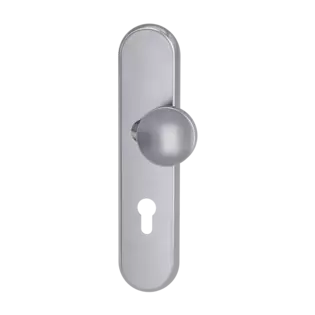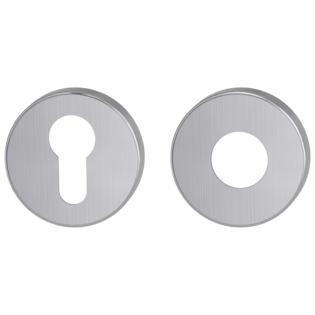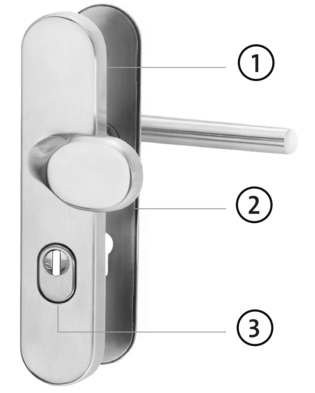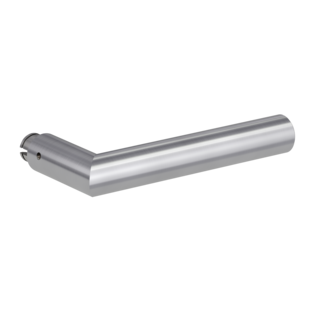Handle TRI 134 for security fitting
When do I need a handle?
Handles complement the Griffwerk product range. As the word "handle piece" already suggests, this is exclusively the handle without the rosette.
You need a handle piece if you want to put together your own protective fitting for your flat entrance door. For your individual protective fitting, combine the handle piece with a combination interior rosette set for the inside of the door and a combination protective fitting for the outside of the door. The advantage of your self-assembled protective fitting: You can individually adapt the fitting on your entrance door to your door handles on your room doors.

1
Combination security fitting
Available in other versions, with profile cylinder or cylinder cover.

2
Combination inner rosette set
Available in further versions round, square, with and without decorative ring in all surfaces.
Combination inner rose sets always consist of a lever handle and key rose with substructure and screws for the door thickness range 38 - 50 mm.
Effective burglary protection for your home!
The number of domestic burglaries continues to rise in Germany. However, most attempts could be thwarted by the right burglary protection. Too little attention is paid to the protection of front doors in particular.

You should pay attention to this with your flat entrance door:
- Invisible screwing prevents screwing on/off from the outside.
- Special hardened steel plate offers resistance to drilling, knocking off and bending.
- 3. Hardened steel cylinder cover prevents the profile cylinder from being pulled out.

Anatomy and movement patterns guide design
In the search for the perfect haptic experience, GRIFFWERK tested a wide variety of profiles in several studies. Finally, several criteria could be defined that are relevant for a "perfect" gripping experience:
The "perfect" profile corresponds to the hollow space,of the closing hand. This is three-sided for anatomical reasons and not round or rectangular
During operation, the angle of the closed hand is changed, as well as the position of the user in space. The closed hand is therefore "moved" on the door handle. It does not remain static. The edges must therefore be softly rounded to allow for movement play.
Most pressure is exerted on the upper contact surface. This is also the largest contact surface between the door handle and the hand. It therefore plays the most important role for the grip feeling. It is particularly pleasant if it is kept very wide, as is the case with TRI.
The upper contact surface should also be inclined towards the door. An angle that slopes gently towards the door corresponds to the natural posture of the wrist when operating a door handle. Thanks to the inclined angle, the wrist is not hyperextended when pressing the handle (as would be the case with a horizontal surface).
Door handle TRI 134 was developed based on these criteria.
A new classic
Door handle TRI 134 is one of the simple, minimalist design forms that fit any door and any architectural style. In addition to a shapely, restrained design, it offers exceptional gripping comfort.
Haptic in perfection
We have developed a profile cross-section with a "perfect feel". Anatomical requirements and movement patterns were taken into account. The gripping area now has three sides and thus corresponds exactly to the actual cavity of the gripping hand. This is not round but has a three-sided shape due to the joints of the hand.
The Greek pronoun "TRI" ("three" or "threefold") therefore became the eponym of the first handle introduced with the new profile.
Its shape literally nestles against the hand.


 L
L
 R
R
